Toyota Supra VS Honda Jazz – Specs, Efficiency & Price Comparison
Which model is the better choice – the Toyota Supra or the Honda Jazz? We compare performance (441 HP vs 122 HP), boot capacity (290 L vs 304 L), efficiency (7.10 L vs 4.50 L), and of course, the price (54200 £ vs 23100 £).
Find out now which car fits your needs better!
The Toyota Supra (Coupe) is powered by a Petrol engine and comes with a Automatic or Manuel transmission. In comparison, the Honda Jazz (Hatchback) features a Full Hybrid engine and a Automatic gearbox.
When it comes to boot capacity, the Toyota Supra offers 290 L, while the Honda Jazz provides 304 L – depending on what matters most to you. If you’re looking for more power, you’ll need to decide whether the 441 HP of the Toyota Supra or the 122 HP of the Honda Jazz suits your needs better.
There are also differences in efficiency: 7.10 L vs 4.50 L. In terms of price, the Toyota Supra starts at 54200 £, while the Honda Jazz is available from 23100 £.
Compare all the key specs now and find out which model fits your lifestyle best!
Toyota Supra
The Toyota Supra stands as an iconic symbol in the world of sports cars, blending striking aesthetics with performance. Its sleek design and elegant curves capture attention, while the finely tuned engine offers an exhilarating driving experience. Inside, the driver-focused cockpit combines luxury with cutting-edge technology, ensuring both comfort and excitement on the road.
details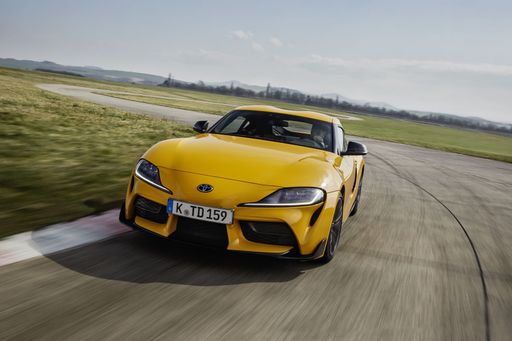 @ toyota-media.de
@ toyota-media.de
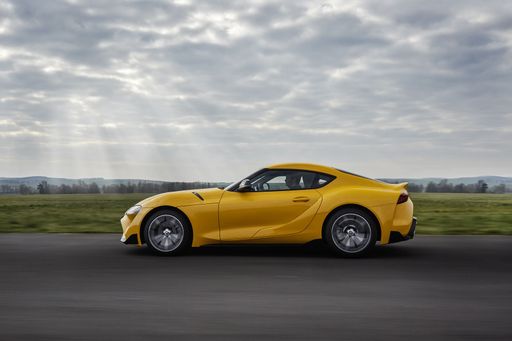 @ toyota-media.de
@ toyota-media.de
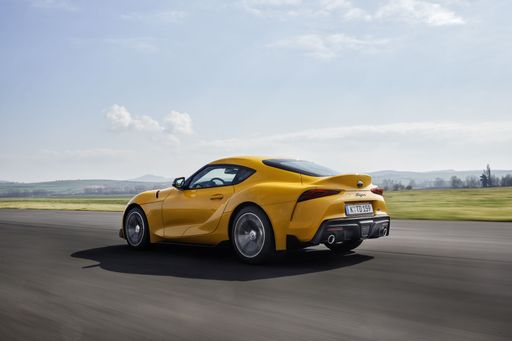 @ toyota-media.de
@ toyota-media.de
Honda Jazz
The Honda Jazz stands out in the compact car category with its intelligently designed interior, offering a surprisingly spacious cabin that comfortably accommodates passengers and luggage. Its efficient hybrid powertrain ensures a smooth and economical driving experience, ideal for both urban commutes and longer journeys. Furthermore, the Jazz is equipped with a range of advanced safety features, providing peace of mind while on the road.
details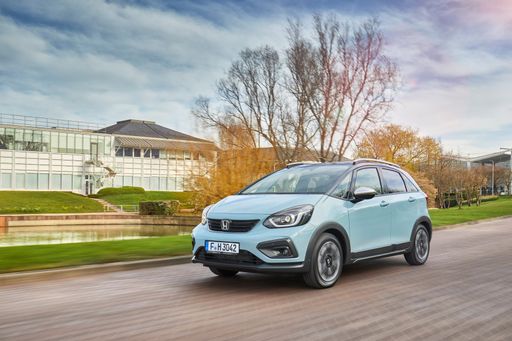 @ hondanews.eu
@ hondanews.eu
 @ hondanews.eu
@ hondanews.eu
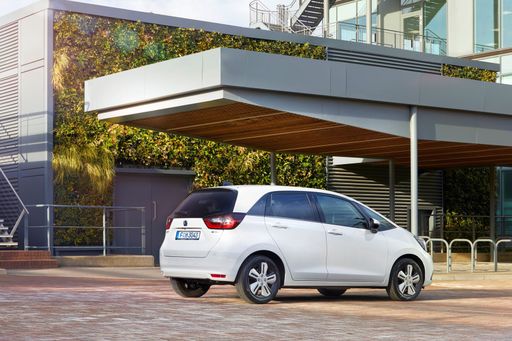 @ hondanews.eu
@ hondanews.eu
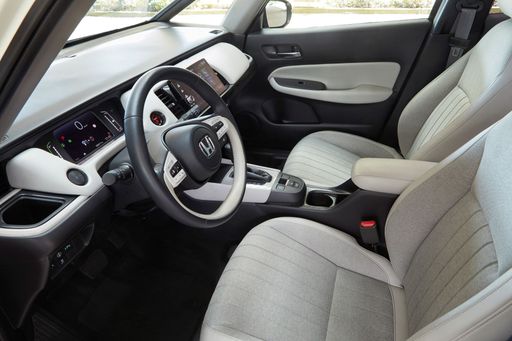 @ hondanews.eu
@ hondanews.eu
 @ hondanews.eu
@ hondanews.eu

|

|
|
|
|
Costs and Consumption |
|
|---|---|
|
Price
54200 - 122400 £
|
Price
23100 - 26700 £
|
|
Consumption L/100km
7.1 - 9 L
|
Consumption L/100km
4.5 - 4.8 L
|
|
Consumption kWh/100km
-
|
Consumption kWh/100km
-
|
|
Electric Range
-
|
Electric Range
-
|
|
Battery Capacity
-
|
Battery Capacity
-
|
|
co2
161 - 204 g/km
|
co2
102 - 108 g/km
|
|
Fuel tank capacity
52 L
|
Fuel tank capacity
40 L
|
Dimensions and Body |
|
|---|---|
|
Body Type
Coupe
|
Body Type
Hatchback
|
|
Seats
2
|
Seats
5
|
|
Doors
3
|
Doors
5
|
|
Curb weight
1395 - 1580 kg
|
Curb weight
1302 - 1320 kg
|
|
Trunk capacity
290 L
|
Trunk capacity
304 L
|
|
Length
4379 mm
|
Length
4089 - 4105 mm
|
|
Width
1854 - 1867 mm
|
Width
-
|
|
Height
1276 - 1292 mm
|
Height
1526 - 1556 mm
|
|
Payload
215 - 315 kg
|
Payload
370 - 388 kg
|
Engine and Performance |
|
|---|---|
|
Engine Type
Petrol
|
Engine Type
Full Hybrid
|
|
Transmission
Automatic, Manuel
|
Transmission
Automatic
|
|
Transmission Detail
Automatikgetriebe, Schaltgetriebe
|
Transmission Detail
-
|
|
Drive Type
Rear-Wheel Drive
|
Drive Type
Front-Wheel Drive
|
|
Power HP
258 - 441 HP
|
Power HP
122 HP
|
|
Acceleration 0-100km/h
4.3 - 5.2 s
|
Acceleration 0-100km/h
9.4 - 9.7 s
|
|
Max Speed
250 - 275 km/h
|
Max Speed
175 km/h
|
|
Torque
400 - 571 Nm
|
Torque
253 Nm
|
|
Number of Cylinders
4 - 6
|
Number of Cylinders
4
|
|
Power kW
190 - 324 kW
|
Power kW
90 kW
|
|
Engine capacity
1998 - 2998 cm3
|
Engine capacity
1498 cm3
|
General |
|
|---|---|
|
Model Year
2024 - 2025
|
Model Year
2023
|
|
CO2 Efficiency Class
F, G
|
CO2 Efficiency Class
C
|
|
Brand
Toyota
|
Brand
Honda
|
Toyota Supra
A Revitalised Icon: The Toyota Supra
The Toyota Supra has been a byword for performance and style since its inception. In its latest iteration, the Supra continues to captivate automotive enthusiasts with its blend of heritage and modern innovation. With a stunning profile and state-of-the-art engineering, the Toyota Supra is more than just a sports car; it’s a testament to Toyota’s commitment to excellence.
Engineering Excellence Under the Hood
At the heart of the Toyota Supra lies a sophisticated 2.0-litre turbocharged four-cylinder engine. This power unit, with a displacement of 1998 cm3, provides a thrilling 258 PS (190 kW) and an impressive torque output of 400 Nm. Such output doesn’t come at the cost of efficiency, as the Supra’s fuel consumption stands at an economical 7.1 L/100 km, supported by an automatic transmission that emphasises smooth power delivery and driving comfort.
Driving Dynamics and Performance
Driving the Toyota Supra is an experience defined by precision and agility. With an acceleration from 0 to 100 km/h in just 5.2 seconds and a maximum speed of 250 km/h, the Supra emboldens its driver with confidence. The rear-wheel-drive layout provides dynamic prowess, ensuring a well-balanced and responsive performance on both straight roads and winding tracks.
Design: A Nod to Tradition with Modern Flair
The design of the Toyota Supra is a harmonious blend of old and new. Its coupe silhouette is characterised by sleek lines and an assertive stance, true to its sports car roots. Measuring 4379 mm in length, 1854 mm in width, and 1292 mm in height, the Supra asserts itself with a compact yet muscular profile. The bold aesthetics are complemented by innovative features that emphasise aerodynamics and driving stability.
Safety and Technological Innovations
Toyota embeds cutting-edge technology within the Supra to enhance driver and passenger safety. Modern connectivity options, driver-assistance systems, and a CO2 efficiency class of F reflect Toyota’s dedication to integrating technology without compromising performance. The Supra’s technologically advanced cockpit connects seamlessly with today’s demand for a digitally proficient driving environment.
Comfort and Practicality
Despite its focus on performance, the Toyota Supra does not neglect practicality. Offering a surprisingly spacious 290 litres of boot space and a tank size of 52 litres, it accommodates both the need for speed and everyday usability. The interior craftsmanship prioritises comfort, ensuring that the Supra remains a suitable companion for both the daily commute and longer escapades.
Conclusion: An Icon Reimagined for the Future
The Toyota Supra stands out not only as a reborn icon but as a forward-thinking sports car that embodies Toyota’s innovative spirit. With a range of options such as the Dynamic Automatik and Pure Automatik trims, the Supra offers tailored experiences for its discerning audience. Ultimately, this modern legend continues to inspire car lovers, representing a perfect harmony of heritage and innovation.
Honda Jazz
The Evolution of the Honda Jazz: A Modern Marvel in Compact Design
The Honda Jazz, known for its compact yet spacious design, continues to impress with its blend of practicality and innovation. Today, we delve into the technical details and innovations that make the latest models of the Honda Jazz stand out in the competitive auto market.
Hybrid Powertrain: Efficiency and Performance
The Honda Jazz is equipped with a cutting-edge 1.5 i-MMD e:HEV full hybrid engine, delivering an impressive 122 PS, or 90 kW. This powertrain seamlessly balances efficiency and performance, achieving a fuel consumption of 4.5 to 4.8 L/100km. Whether navigating the city streets or taking on longer journeys, the Jazz provides a responsive and smooth driving experience, accentuated by its CVT automatic transmission.
Sleek Design with Smart Storage Solutions
Staying true to its roots, the Honda Jazz maintains a compact exterior with dimensions ranging from 4089 to 4105 mm in length and 1526 to 1556 mm in height. Despite its size, the Jazz offers ample luggage capacity of 304 litres, thanks to the intelligent Magic Seat system that allows for flexible storage configurations. The combination of a sleek design with practical storage makes the Jazz an ideal city companion.
Advanced Technology and Comfort
The Honda Jazz doesn’t stop at efficiency; it also comes packed with a plethora of technological features. As part of its high-tech package, the Jazz includes a state-of-the-art infotainment system and various driving assistance technologies, enhancing both safety and comfort. Families and commuters alike will appreciate the thoughtfully designed interior, seating up to five passengers with ease.
Performance and Handling Dynamics
The driving experience of the Honda Jazz is primarily characterised by its lively handling and assured grip thanks to its front-wheel-drive configuration. With a torque of 253 Nm and a 0-100 km/h acceleration between 9.4 to 9.7 seconds, the Jazz offers adequate performance for everyday urban driving. The maximum speed reaches 175 km/h, ensuring the Jazz can hold its own on motorways too.
Environmental Responsibility and Cost Efficiency
In an era of heightened environmental awareness, the Honda Jazz stands out with a CO2 emission range of 102 to 108 g/km, adhering to the CO2 Efficiency Class C. Cost-conscious consumers will appreciate the Jazz's low running costs, with potential expenses ranging from €812 to €877 per month and a cost per kilometre of 32.5 to 35.1 cents.
Conclusion: A Comprehensive Package
Combining innovation, economy, and style, the Honda Jazz serves as a testament to Honda's commitment to evolving their compact range to meet the modern driver's needs. For those seeking a reliable, efficient, and technologically advanced vehicle, the Honda Jazz stands ready to elevate their driving experience.
The prices and data displayed are estimates based on German list prices and may vary by country. This information is not legally binding.
